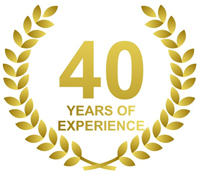In 2016 the first of the baby boomers turn 70. They’re planning for their futures now, and they’re the ultimate influencers in selecting care options for their aging parents. This double-edged market is dramatically different from even a few years ago, and communities will need to stay ahead of trends in order to be competitive.
Senior housing construction is booming in anticipation of the boomers. How will you compete?
The past year saw a surge in independent and assisted living construction and an increase in active adult start-ups. Post-recession, investors and developers are smarter and better informed than ever as they respond to pent-up demand.
Older consumers who delayed the decision to move during the recession are now reconsidering, and their baby boomer family members are helping them make the move while planning for their own futures.
High Expectations, High Wealth.
The incoming group of retirees has been the center of consumer culture for their entire lives. They are wealthier than past generations of seniors, and they are accustomed to high competition for their business.
They are also more likely to be working well into their seventies because they want to work. Many have embarked on second careers as a means of fulfillment community engagement.
Boomers are planning for their futures. Your community should be planning for their futures, too.
It’s a far different retirement paradigm from just a generation ago. While the new generation of seniors know they’ll need care one day, they view their retirement years as a time to contribute meaningfully, to live as fully as possible, and to experience as much as possible, now that the responsibilities of first careers and families are behind them.
And, they’re making decisions for today’s needs-driven customer, too. They are the ultimate influencers for their parents who need care services now.
If you’re just keeping up, you’re not keeping up. Innovate!
Existing communities must reposition themselves to compete with new construction. All senior housing providers, whether new or established, must decide how best to meet the needs and desires of this new, double-edged market.
Are you ready to get ahead of your competition? Following is our Sweet 16: 16 technological, design, dining, and programming trends that your community can begin adopting now.
The “Sweet 16” for 2016:
Technology
1. Tech enabled care: keeping care management technology up to date is attractive to prospective residents and staff, and improves efficiencies and quality of care.
2. Combine traditional and new media to find your future prospects. Baby boomers still open mail and reads newspapers, but they’re also online in great numbers. Interactive, informative websites and highly targeted electronic marketing combine to make a great first impression and keep your community top of mind.
3. Free WiFi: It’s a small but powerful offering. While many residents will choose to have their own internet connections, free WiFi is an inexpensive way to allow residents and their guests to stay connected.
4. Invisible safety: Safety items such as pendants and guardrails are necessary, but can be an unwelcome symbol of frailty in a resident’s personal space. High-end materials in showers can disguise their safety features, while advances in fall prevention can keep residents safe without obvious, visible items like pendants.
5. There’s an app for that. Younger seniors are accustomed to the convenience of ordering online. Consider offering online scheduling of salon, dining, health care, and other services.
6. Tech support: This new group of seniors is moving in with computers, printers, tablets, phones, fitness trackers, and countless other devices. Device repair and help right at their door supports a busy, connected lifestyle.
Design
7. Design simplicity: Simple, clean design creates an atmosphere of refuge from the busy world in which boomers live. Designers are moving toward white and neutral hues with splashes of color to create crisp, peaceful spaces.
8. Home offices / studios: Many boomers continue working well into retirement, often embarking on second careers. Home offices that offer an organized space and are optimized for technology are an important component of the boomer lifestyle.
9. Media spaces: Boomers are connected, and heavy consumers of media. Residences should be optimized with abundant outlets, and cable / ethernet ports throughout.
10. Lighting: Consider updating overhead fluorescents with recessed lighting to reduce glare and reduce institutional feel. In residences, simple lighting upgrades under cabinets and in corners instantly create an atmosphere of warmth and luxury. Whether building or renovating, make the most of window spaces that bring the outside in.
Dining
11. Healthy and varied dining options: Boomers are accustomed to casual dining with abundant options. A variety of cuisines and options that meet dietary preferences – such as vegetarian and organic – create a broader appeal.
12. Go local: Embrace the farm to table concept. Even large food distributors frequently have local options. Other ways to go local include a farmers market onsite for residents and the public and a community vegetable garden.
Programming
13. Superior – and fast – service: Look for forward thinking services in your area that your residents can enjoy. On the west coast, seniors have HEAL, a modern spin on the traditional house call, that brings a doctor to their home in an hour. “Uber for Seniors” makes transportation more accessible at any moment.
14. Go green. Green / LEED certified communities appeal to social conscience. For existing communities, comprehensive recycling programs, eco-friendly cleaning products, solar and wind power, and volunteer opportunities at nature centers appeal to environmentally conscious consumers as long as they don’t break the budget.
15. Arts, Entertainment, and Lifelong Learning: Boomers see retirement as a time to engage, not retreat. Consider programming that includes lifelong learning and creates a sense of community, such as resident lead seminars and courses, and affiliations with local universities that allow residents to audit classes. In-house classes that inspire a thought of “I always wanted to learn how to do that!” create instant appeal. Think pottery, yoga, painting, self-publishing, learning to read music… the options are endless.
And finally…
Remember, it’s a Life Plan Community. There’s a reason why the industry is dropping the term Continuing Care Retirement Community. The younger older adults moving into retirement are looking for far more than care. They’re seeking vibrant communities where they can explore, play, be healthy, and reinvent themselves in their retirement.


